*NURSING > EXAM > EXAM 1 NR 228[PRACTICE QUESTIONS AND ANSWERS mostly tested in the exams graded A+] (All)
EXAM 1 NR 228[PRACTICE QUESTIONS AND ANSWERS mostly tested in the exams graded A+]
Document Content and Description Below
EXAM 1 NR 228 1. Which principle of health diet suggest selecting a wide range of foods as represented by the USDA’s MyPlate food plan? a) Variety b) Moderation c) Adequacy d) Energy density ... 2. A group of strategies used to increase the level of health of individuals, families, groups and communities is known as: a) Wellness b) health promotion c) tertiary prevention d) nutritional assessment 3. Food descriptions on labels assist us in better understanding the products inside of the package. Which of the following food description is false? a) “Extra lean” contains less than 5g of fat, 2g of saturated fat, and 95mg of cholesterol per serving. b) “Light or lite” products contain half the calories of two thirds the fat content of the original product. c) “Lean” contains less than 10f of fat, 4g of saturated fat, and 95mg of cholesterol per serving. d) “Good source of” contains 10%-19% of daily value for specific vitamin, mineral, or fiber in one serving. 4. Nutrients that DO NOT yield energy include: a) minerals, vitamins and water b) protein, water and vitamins c) water, vitamins, and carbohydrates NR 228 EXAM I PRACTICE QUIZLET 2 d) minerals, vitamins, and proteins. NOTE: Energy-yielding nutrients are organic Carbohydrates, proteins, and lipids 5. The nutrients that provides the highest number of kcals per gram is: a) protein b) alcohol c) fat d) carbohydrate NOTE: Kcals values for carbohydrates (4gr), Protein (4gr), alcohol (7gr), Lipids/fat (9gr) 6. As a nurse, you know that health promotion typically, consist of strategies use to increase the level of the health of individuals, their families, groups, and entire communities. Example of health promotion strategies implement by nurse often include: a) Knowledge, power, and community services b) trust, government stipends, and managed care c) knowledge, techniques, and community support d) trust, cultural perception and knowledge 7. Water soluble and fat soluble describes the two classes of: a) fiber b) vitamin c) minerals d) carbohydrates NOTE: Fat soluble vitamins (A, D, E K), Water soluble vitamin (B, C). fat-soluble - absorbed like fats, 1st into the lymph and then into the blood; Usually occur together in fats and oils; Absorbed in the same manner as lipids. water-soluble - absorbed directly into the blood NR 228 EXAM I PRACTICE QUIZLET 3 8. A category of nutrients that assists other nutrients with metabolic functions throughout the body is: a) water b) protein c) vitamin d) minerals NOTE: Vitamins indirectly assist other nutrients through the complete processes of digestion, absorption, metabolism, and excretion. Water provides a fluid medium and a transport system for body processes. Protein makes up many body structures, enzymes, and components of the immune system. Minerals serve structural purposes and are found in body fluids. 9. The best source of action to provide adequate amounts of vitamins and minerals is to: a) promote weight loss b) eat a variety of foods c) eat at least three meals per day d) consume a high-fiber, low-fat diet. NOTE: Including a variety of foods increases the likelihood of obtaining adequate amounts of vitamins and minerals. Loss of weight will not contribute to adequate nutrient intake. Eating at least 3 meals per day may help increase nutrient intake to some extent, but they could still be meals that provide a limited assortment of foods. Similarly, a high-fiber, low-fat diet could consist of foods that are relatively low in vitamins and minerals. 10. If a college student is eating only one small meal per day in an attempt to lose weight and is taking high doses of vitamin and mineral supplements to try make up for the lack of food, he or she would be describe as having: a) malnutrition b) nonnutrition c) overnutrition d) disordered eating NOTE: An imbalance of nutrients and/or energy (in this case, high intake of some nutrients and low intake of energy) is called malnutrition. Overnutrition only refers to excessive intake or nutrients and/or energy. Disordered eating refers to unusual eating habits that may or may not lead to some form of malnutrition. Nonnutrition is not a recognized term. NR 228 EXAM I PRACTICE QUIZLET 4 11. A teenager client is hungry and goes to the refrigerator for a snack. A holiday has just been celebrated at her home, and many of her favorite foods are available. She selects some slices of roast turkey and a cup of her aunt’s special fruit salad. This is an example of: a) binging b) abundance c) food choice d) food preference NOTE: This teenager is able to select foods according to her preferences. Food choices are restricted by convenience, but many of her favorite foods are available so her choices are not limited. The food is abundant, and she may choose to binge and overeat, but her selections are made according to her food preference. 12. Economics is a significant factor influencing the nutritional status of communities. To overcome economic disadvantage, public health efforts include: a) the MyPyramid food guidance system b) educational program on food safety c) the U.S. government’s Food Stamp Program d) public service announcements on heath eating NOTE: The Food Stamp Program provides coupons to buy nutritious foods for individuals and families with incomes below certain levels. This can help improve the nutritional status of economically challenged families. The other public health efforts listed are not specifically aimed at people who have an economic disadvantage. 13. Between 1970 and 2000, nutritional concern centered on reducing nutrient excesses. Before 1070, the focus was to reduce: a) consumption of lipids b) low-carbohydrate diets c) nutrient deficiencies d) prevention of infection disease NOTE: Before 1970, most nutritional problems were attributed to nutrient deficiency. Later on, research showed the association between excessive lipid intakes and chronic disease. Low- NR 228 EXAM I PRACTICE QUIZLET 5 carbohydrate diets gained popularity for weight loss after 1970. Prevention of infectious disease is not a direct nutritional concern. [Show More]
Last updated: 1 year ago
Preview 1 out of 12 pages
.png)
Reviews( 0 )
Document information
Connected school, study & course
About the document
Uploaded On
May 04, 2021
Number of pages
12
Written in
Additional information
This document has been written for:
Uploaded
May 04, 2021
Downloads
0
Views
31


 (2).png)
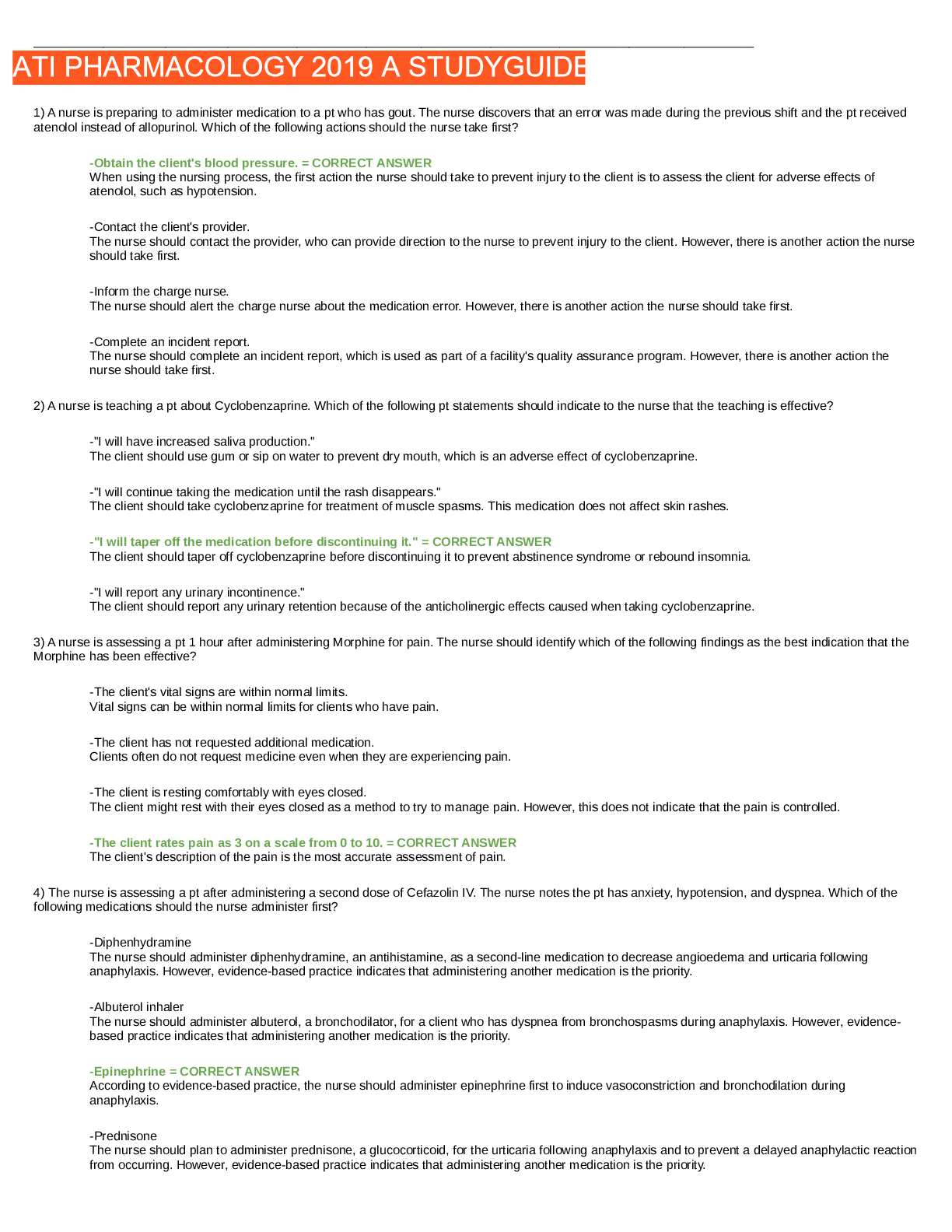
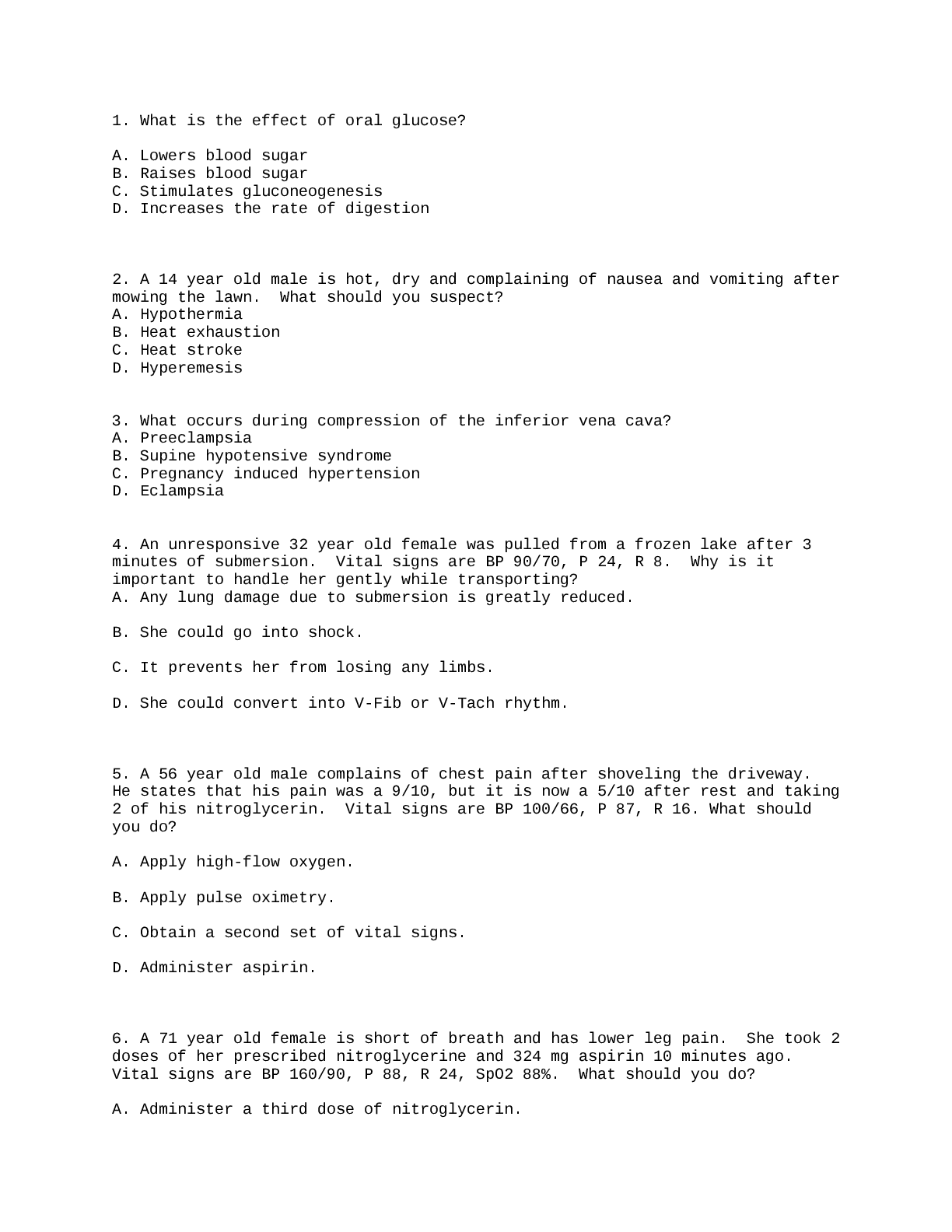
.png)
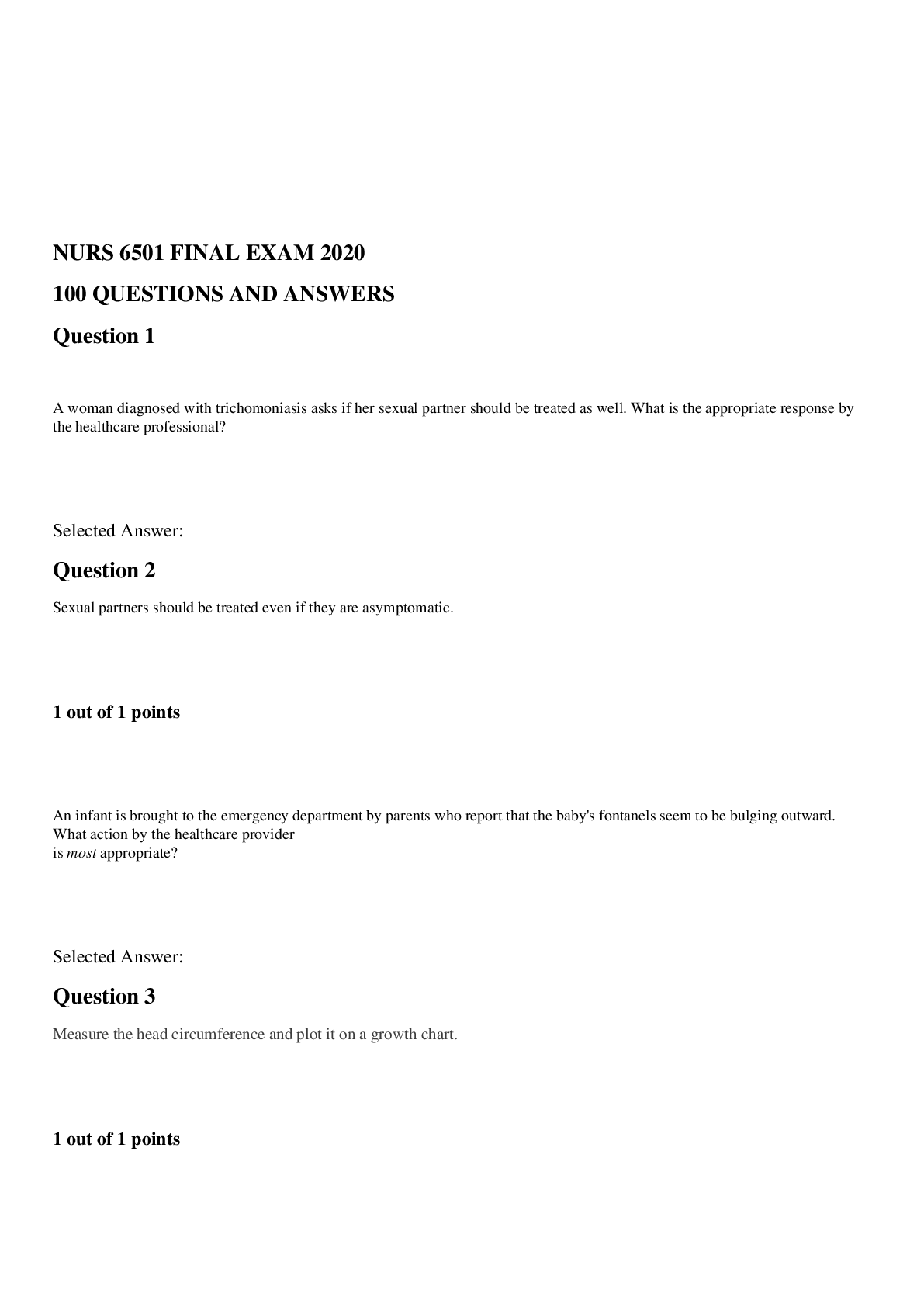
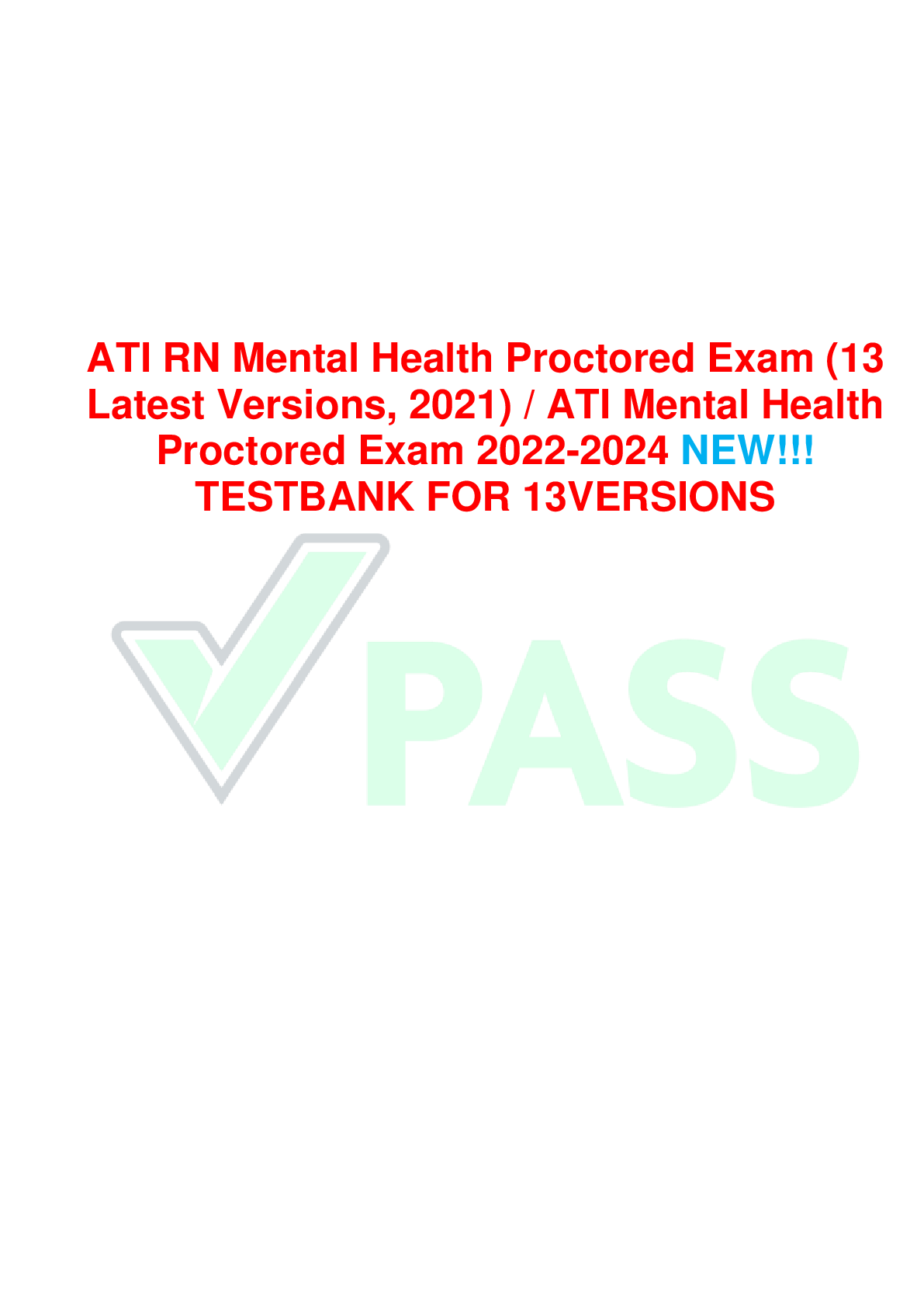
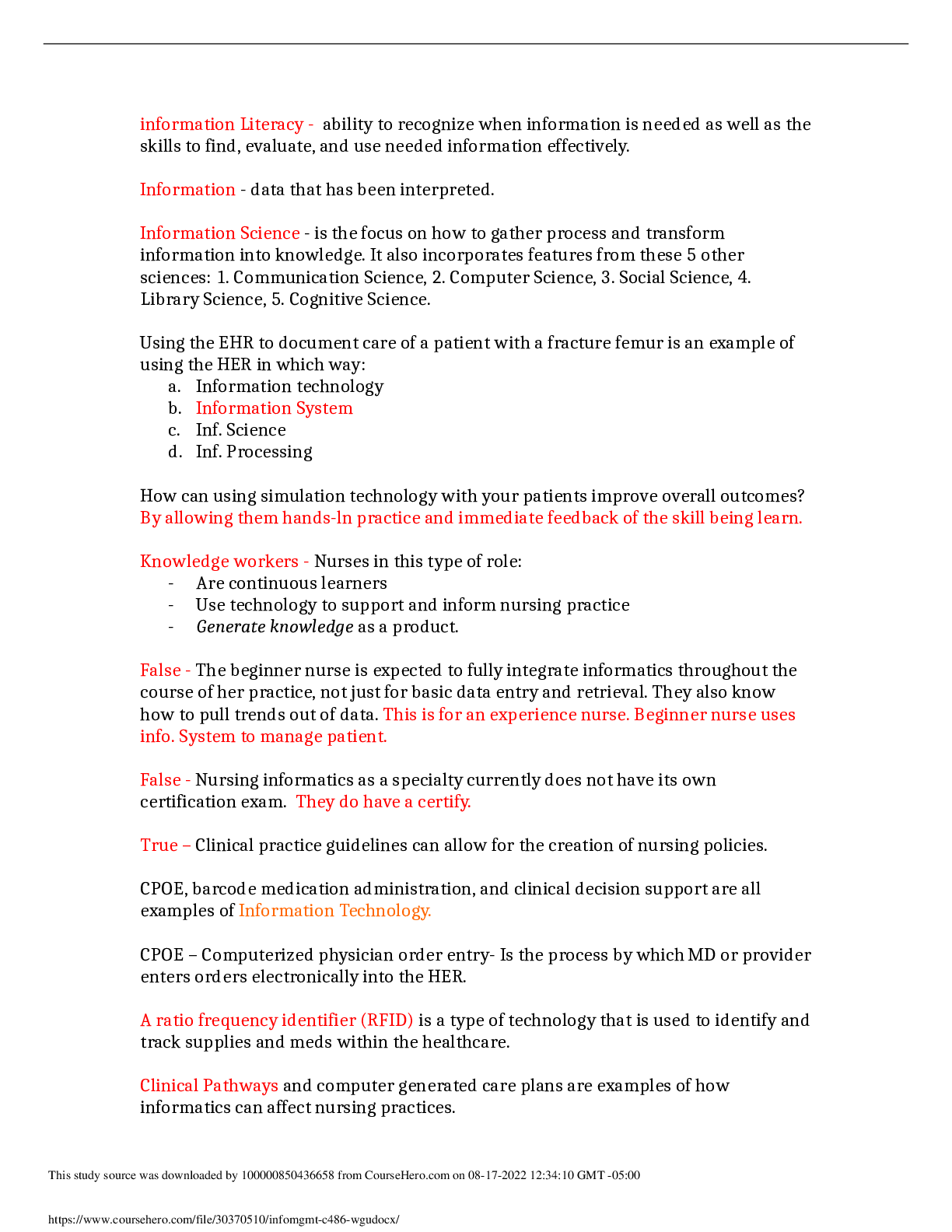
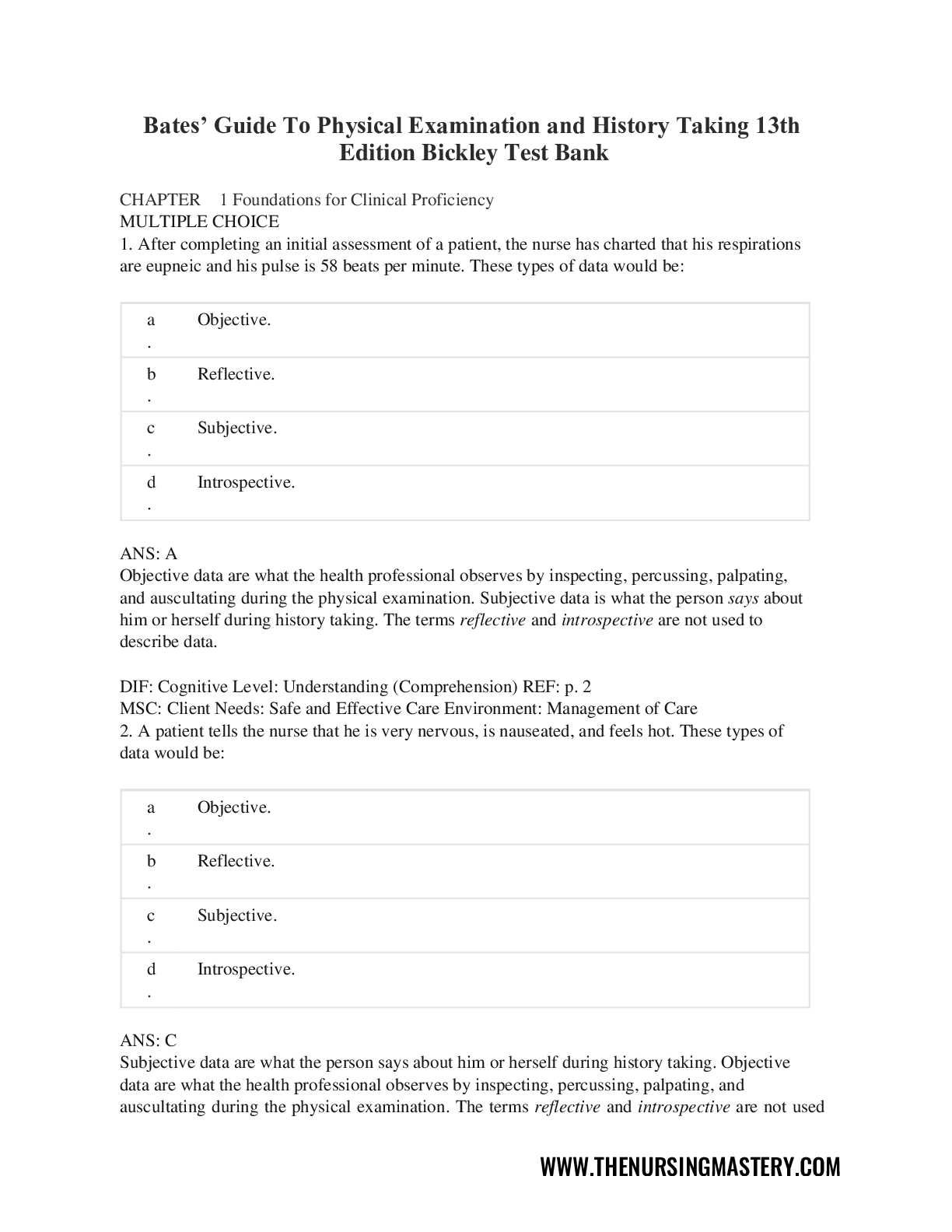
 (1).png)
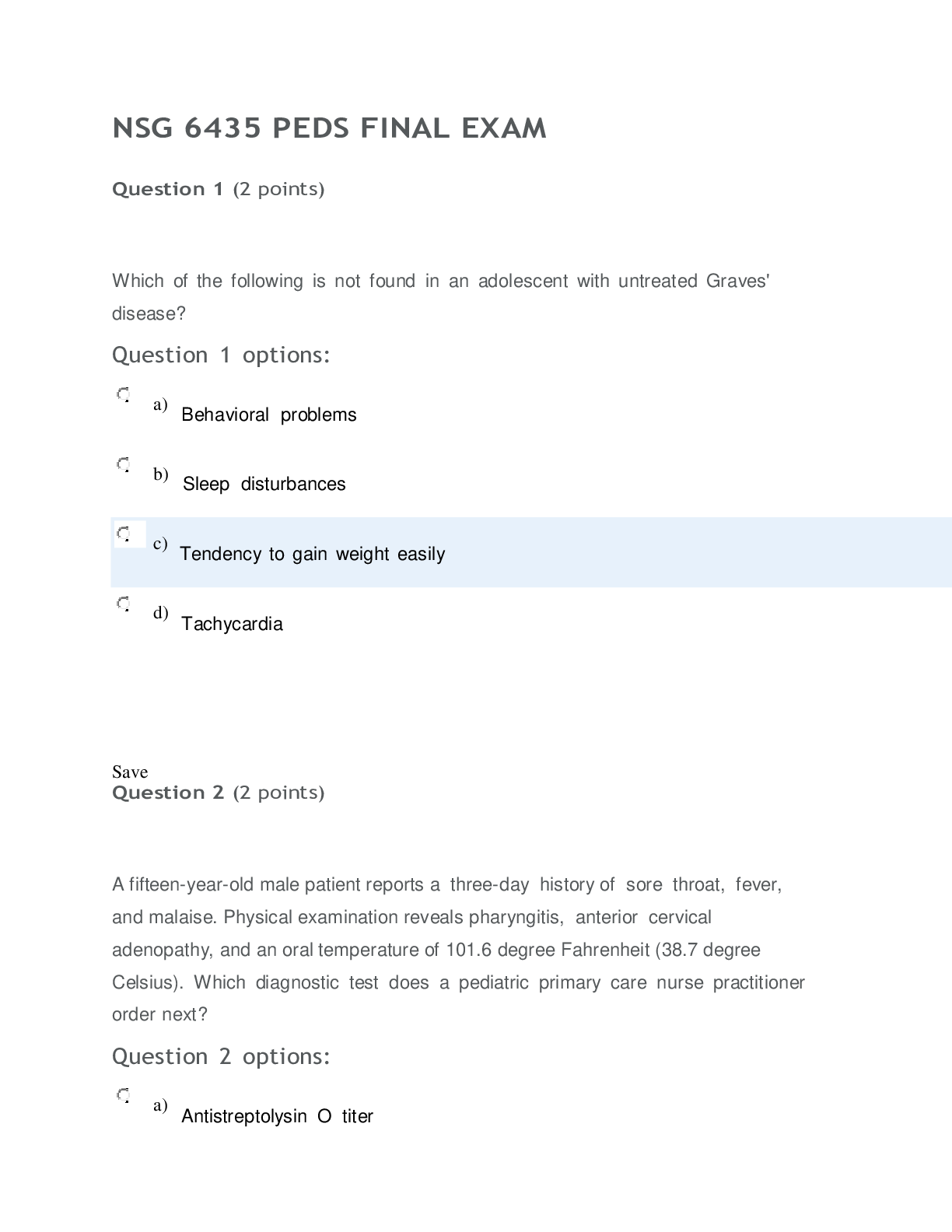
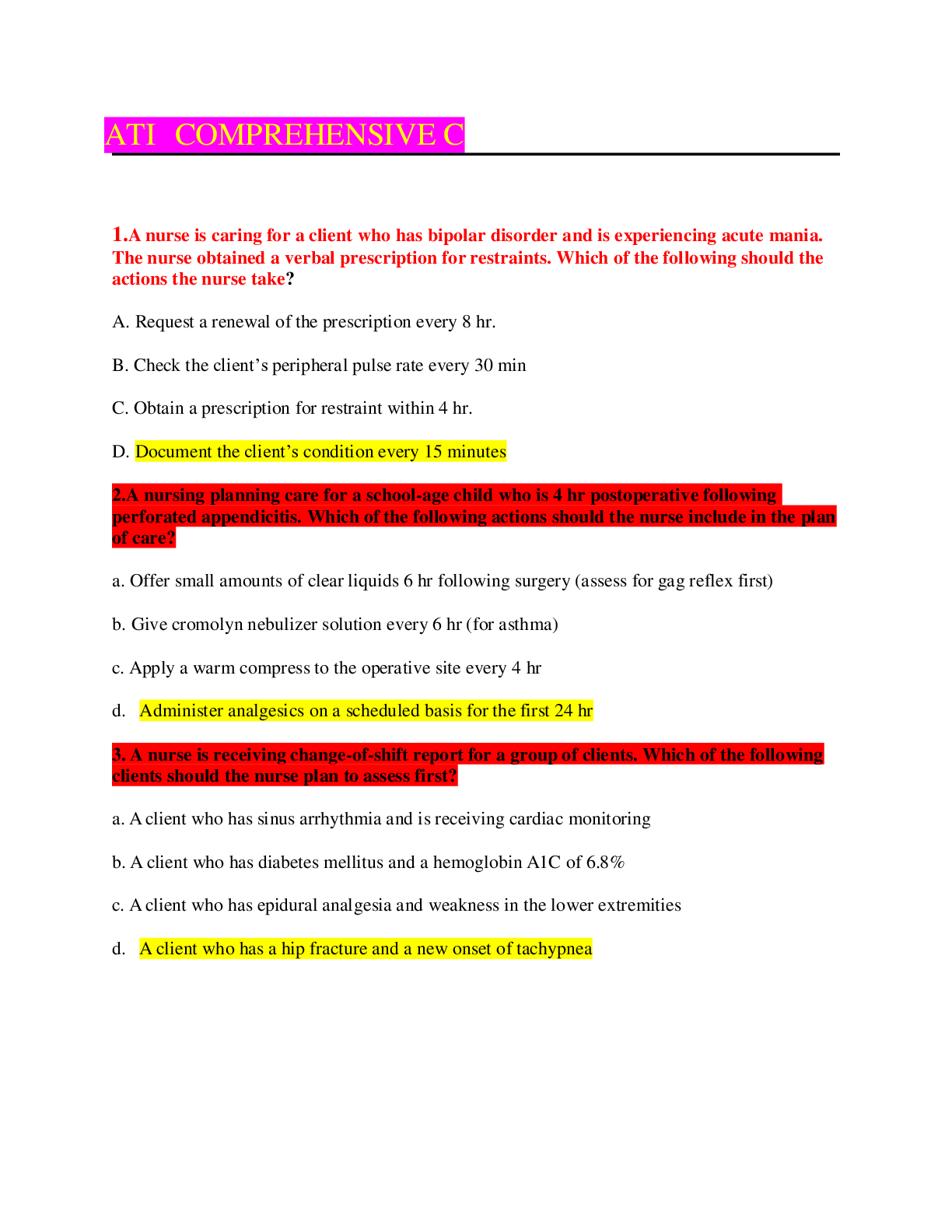


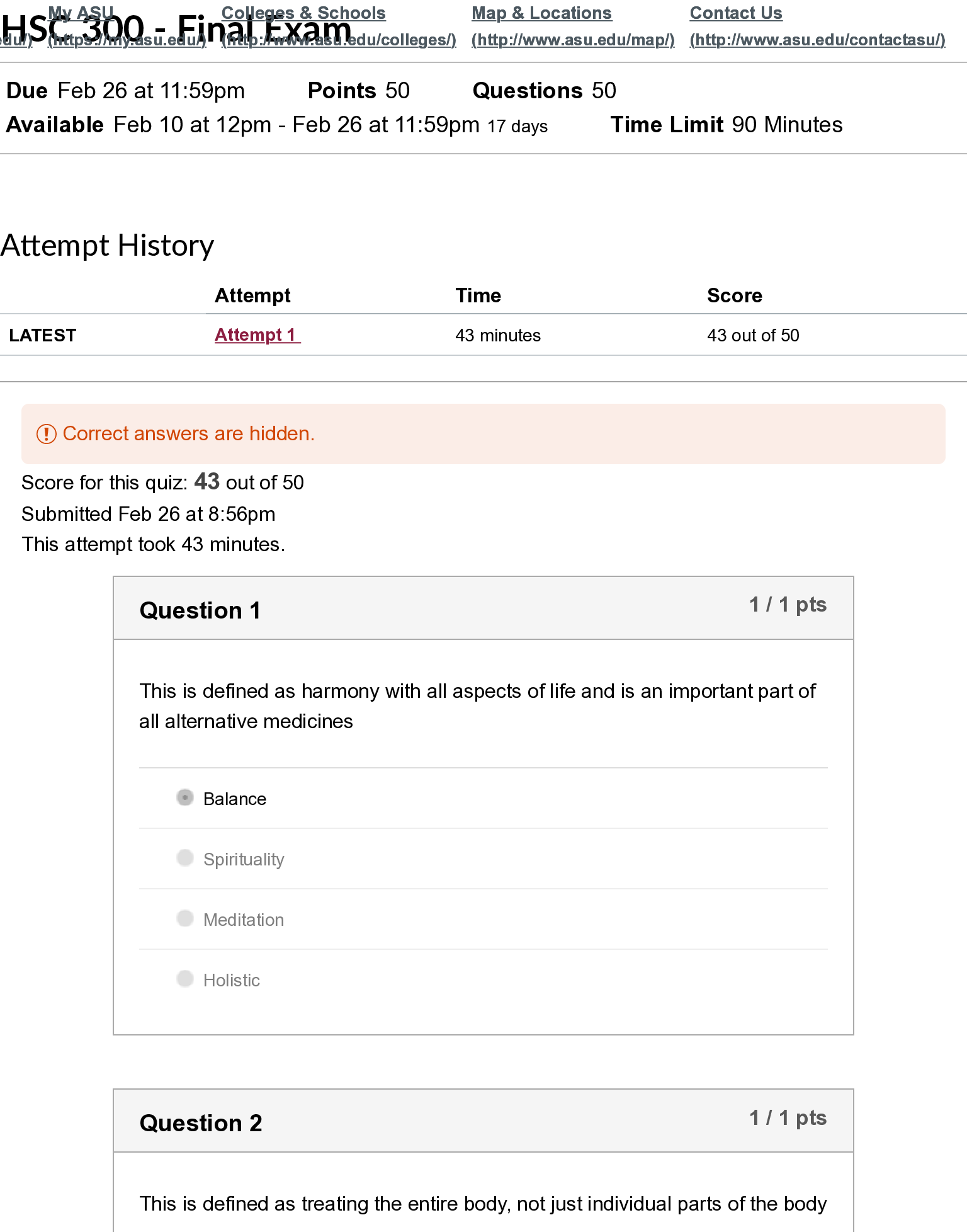
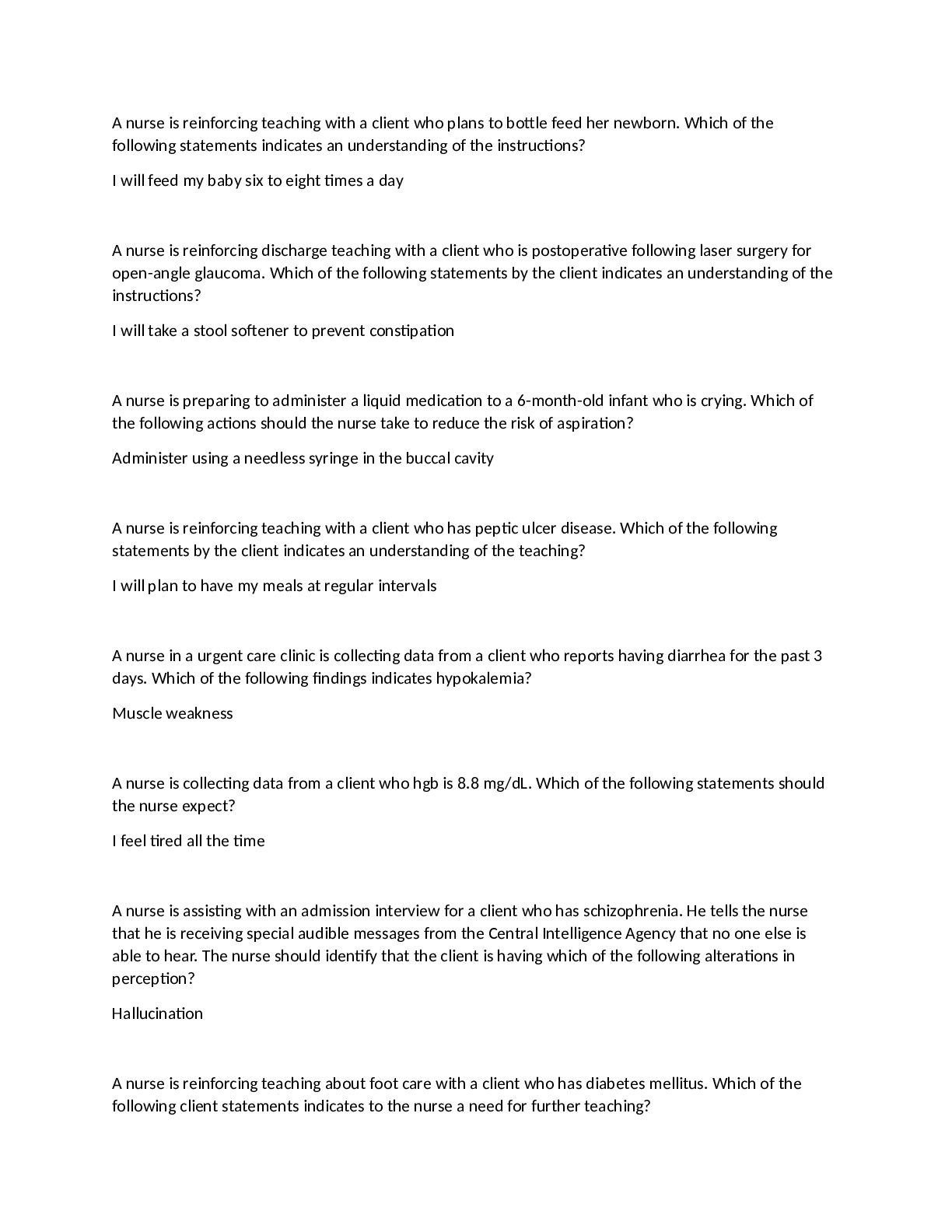

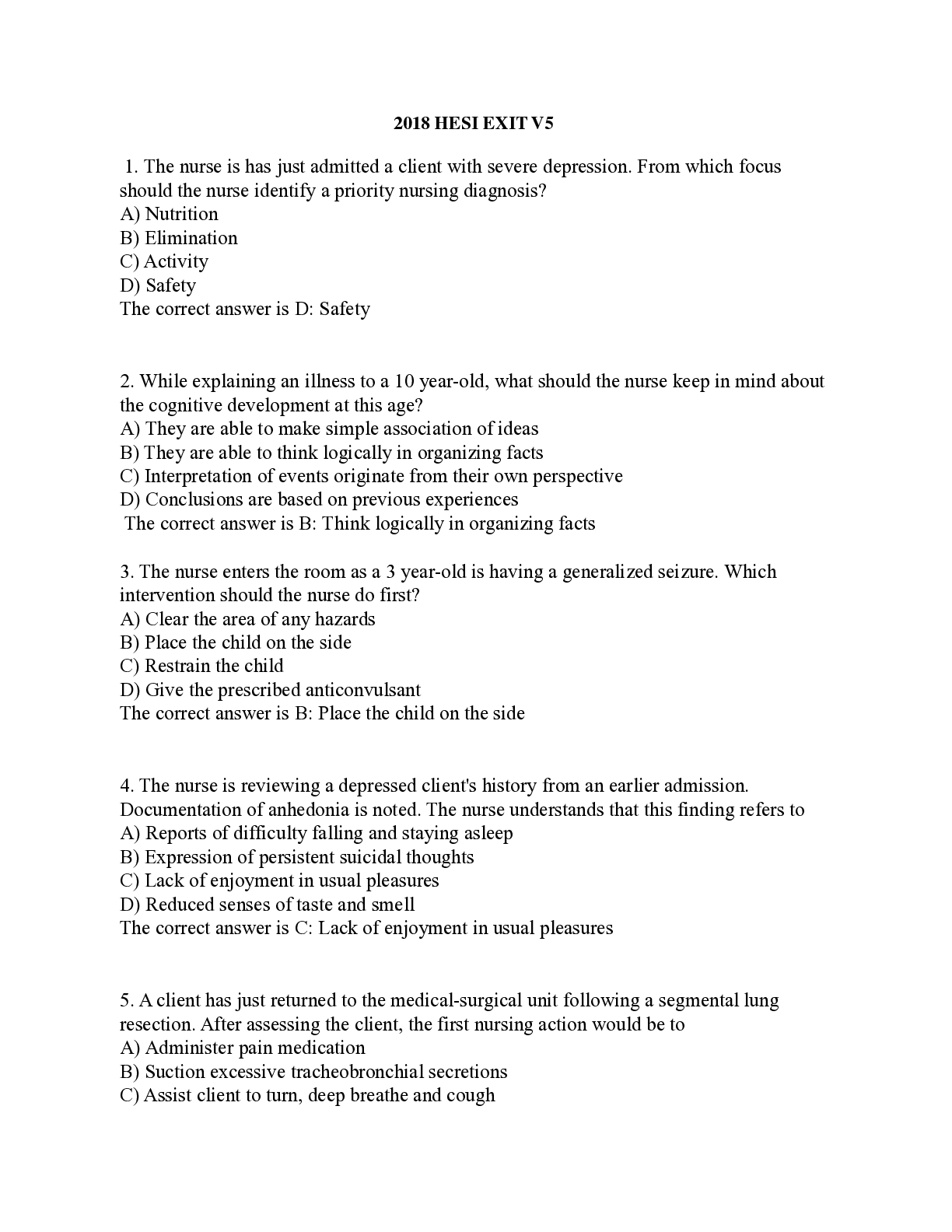
.png)
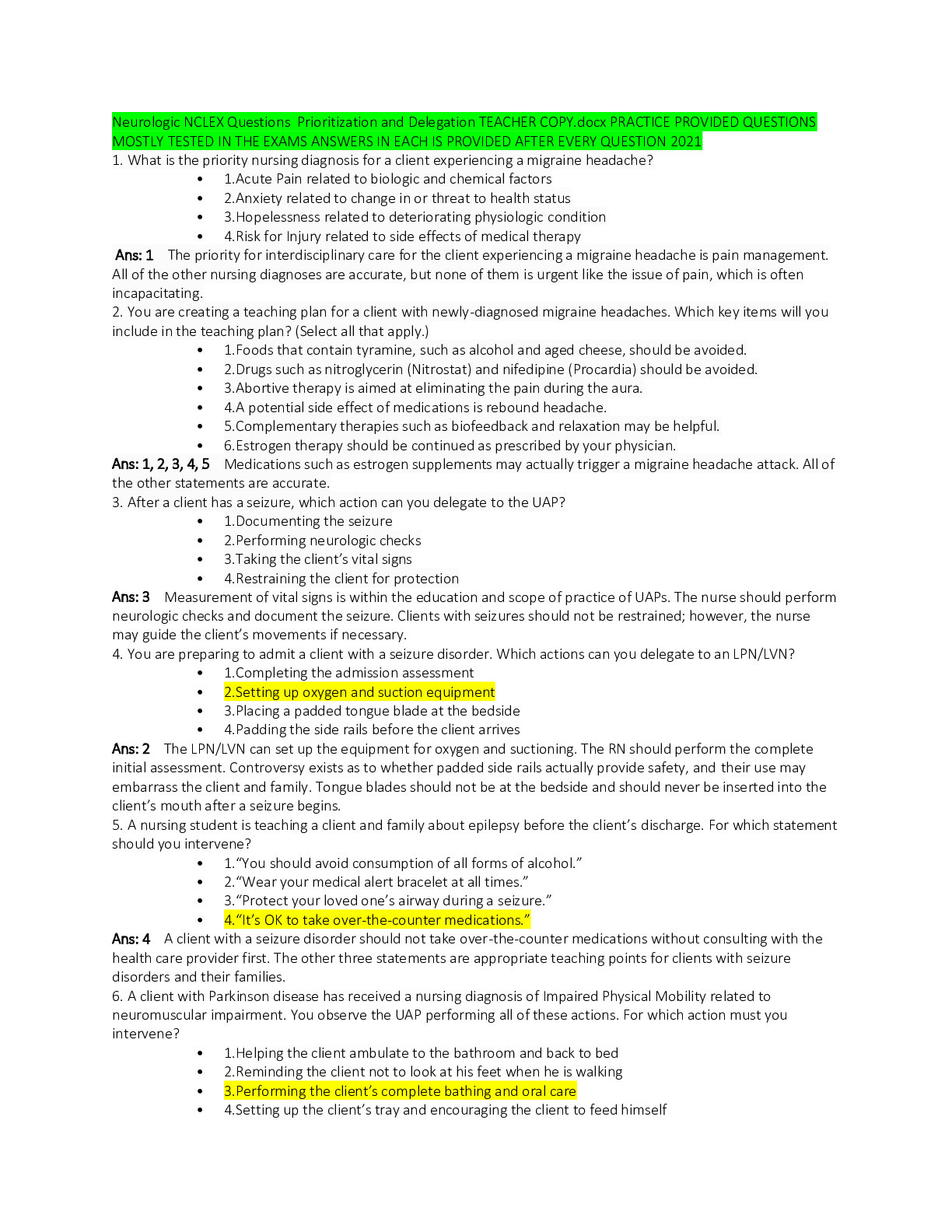
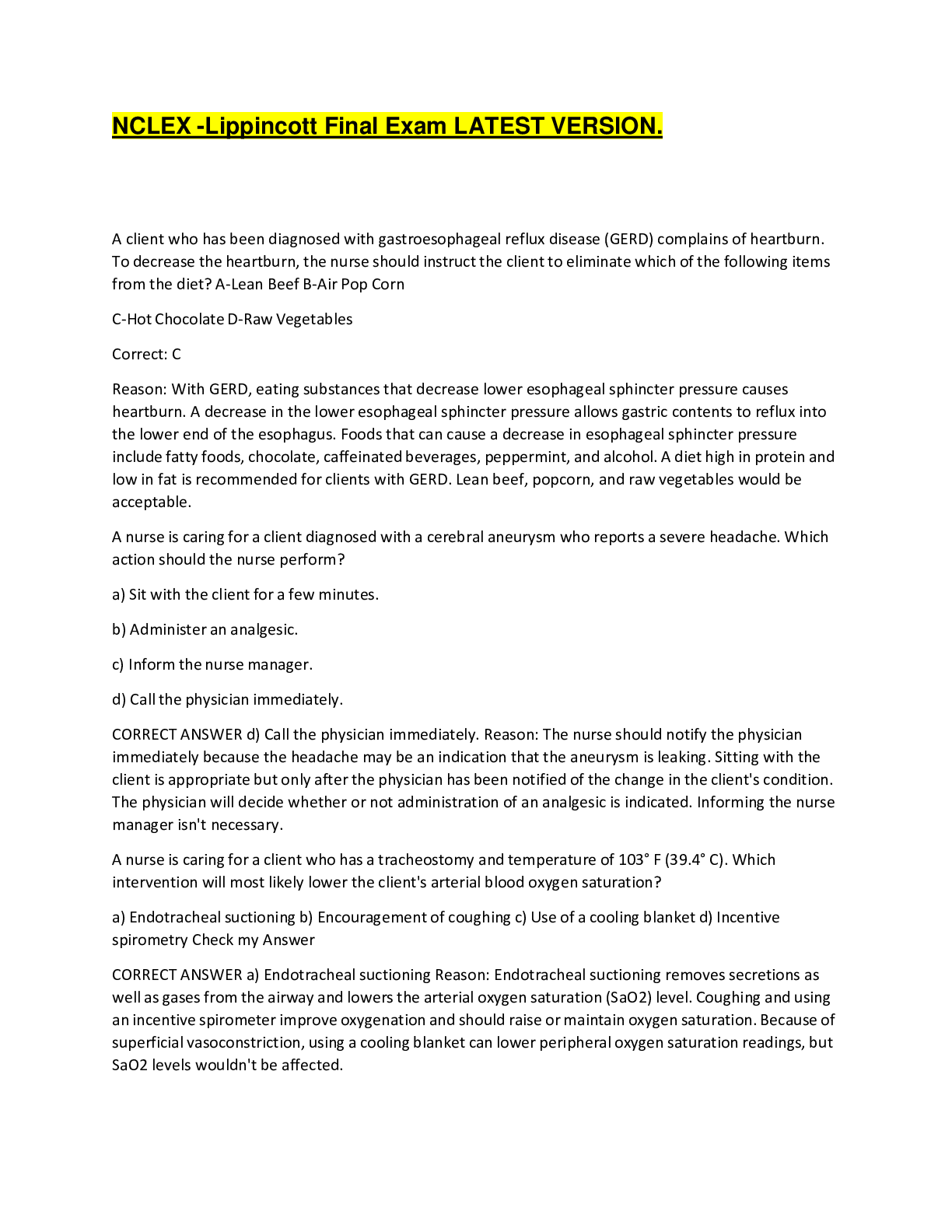

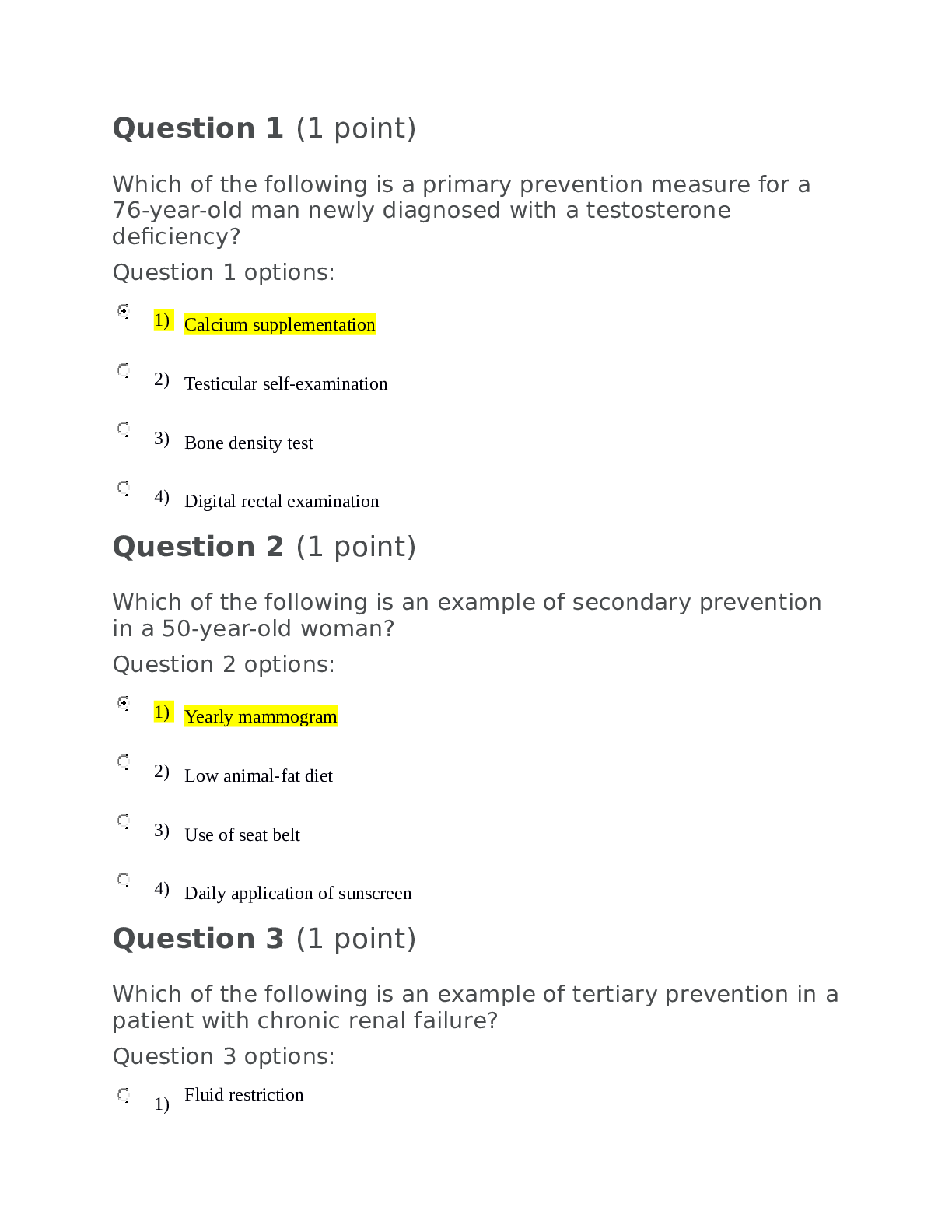

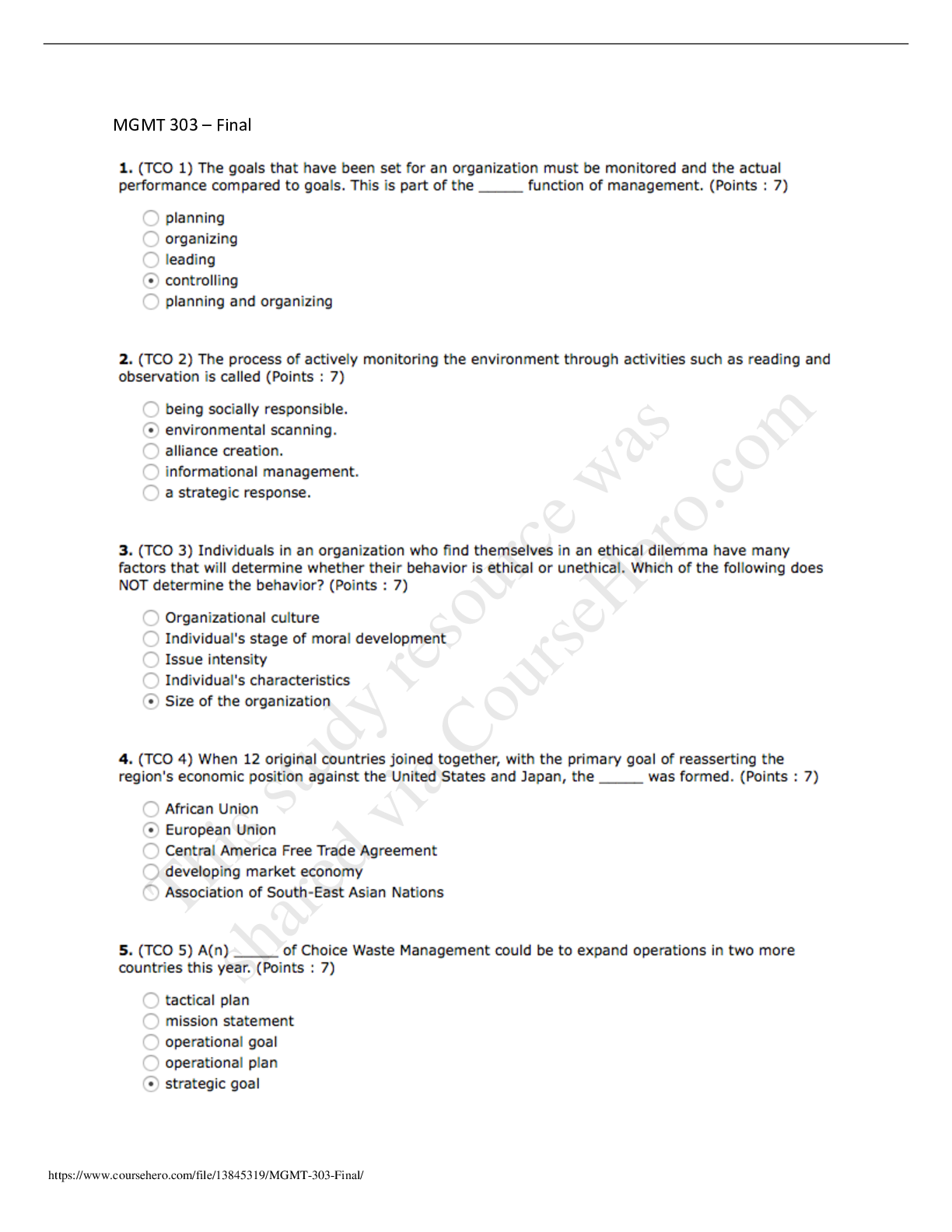
.png)
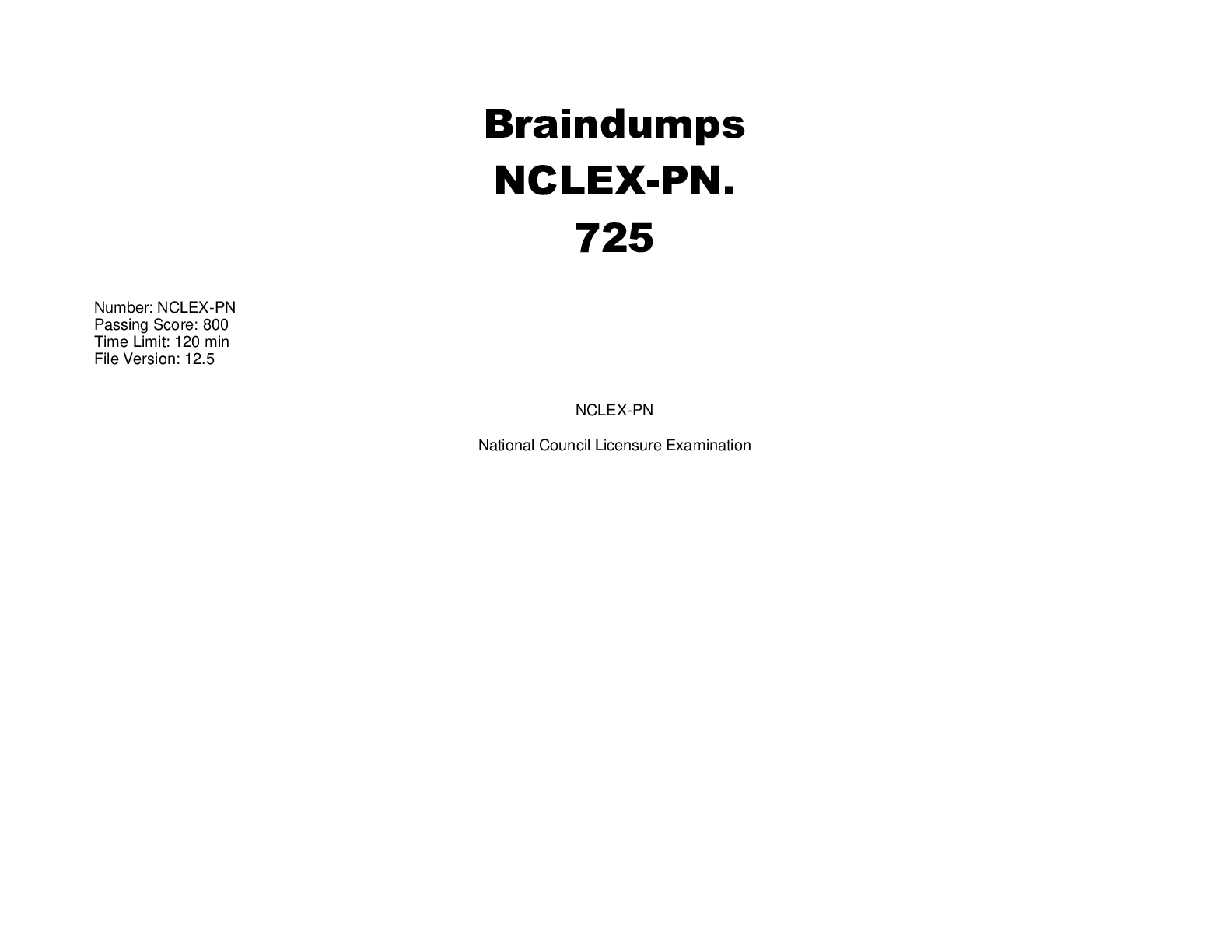
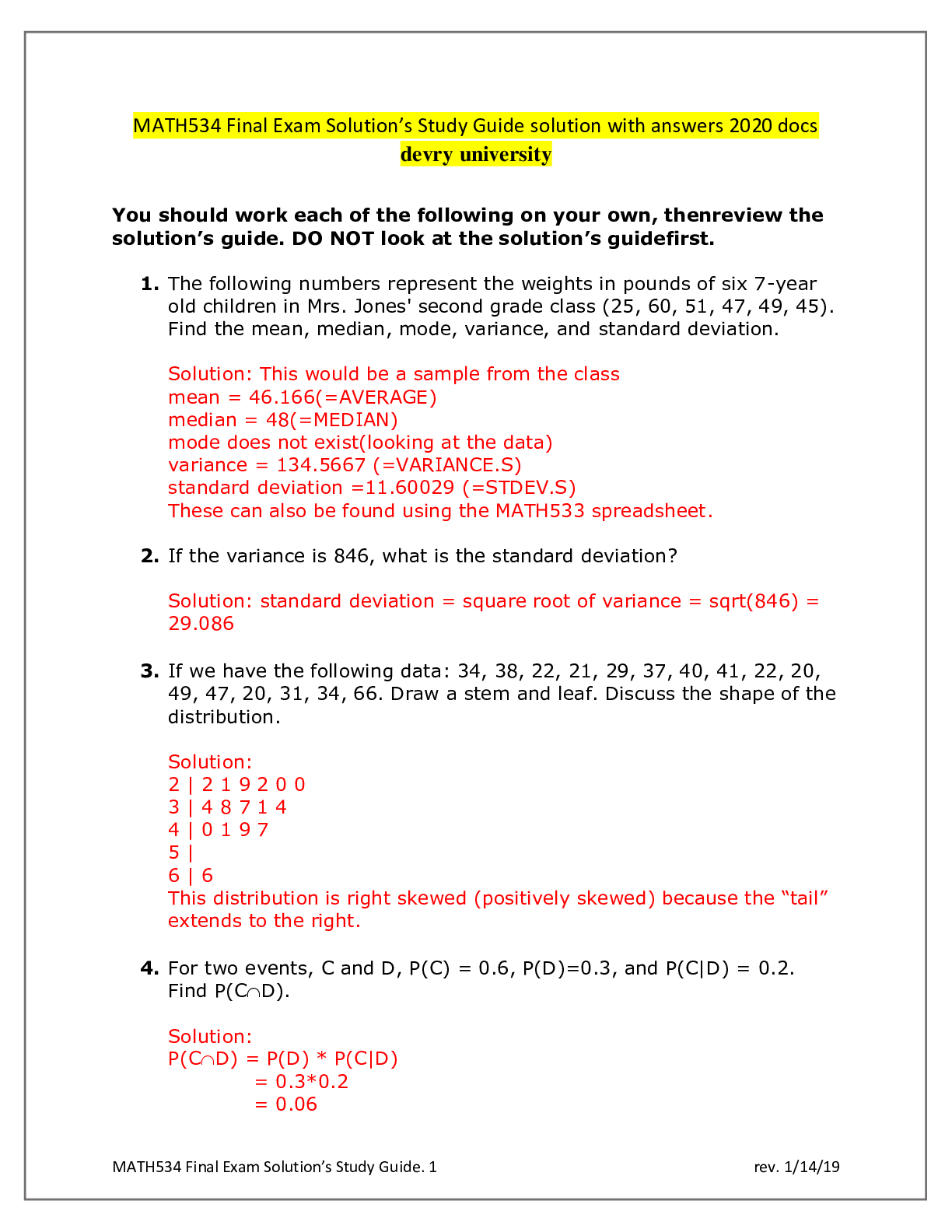
.png)
.png)


